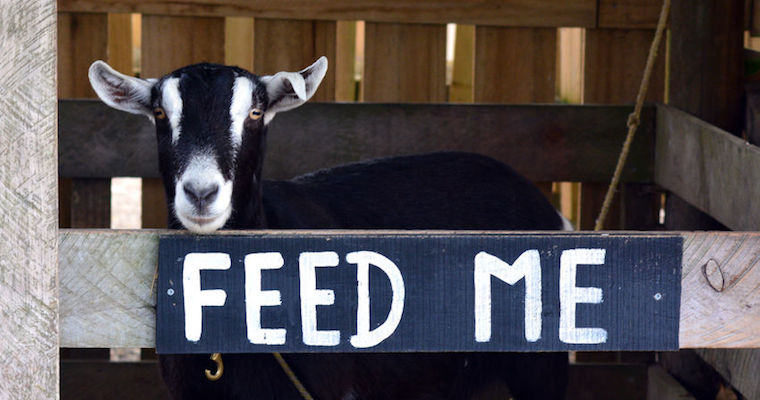
How to Hold an Effective Product Grooming Session
I want to talk about a recurring meeting. You know, the one that makes you cringe. It pops up on your calendar and makes you wish you could quietly hit “decline.” Many years ago, I often had these meetings. Unfortunately, little was accomplished except an invite to the next one to discuss the same topic all over again. But there was one type that was worse than the others — the ongoing product backlog grooming session.
You are probably familiar with these gatherings. Some companies call them “refinement meetings” or “backlog grooming sessions” or “story time meetings.” Whatever you call it, the discussion is usually held near the end of a sprint to ensure any not-yet-assigned user stories are prioritized and ready for the next one.
“Grooming” is a reference to keeping the backlog clean and orderly. And when done right, these sessions can help you improve the product by defining and prioritizing features that customers really need. But when done wrong?
You can get so bogged down in the technical details that you never talk about what really matters to users of your software — how the features you are discussing will deliver customer value.
For me and my former team, we rarely left those meetings feeling like we were adding anything meaningful into the next sprint. Even worse, we knew we would be back debating the very same things when the recurring meeting returned in two weeks. Part of the reason for this was that there was a lot of over-discussion. We would spend 30 minutes discussing the requirements for the first few features and get hopelessly off track.
I felt frustrated. So I asked a more seasoned product manager for advice. She immediately saw the issue: All that over-discussion was happening because there was no strategy to focus our conversations. We were looking at every feature as if it held as much value as the next one — making it easy to get lost in the technical details.
We tiptoed around decision making because we were not clear on what mattered most. Rallying around a shared vision for the product got our meetings back on track and helped us to be more objective.
I was grateful for that advice then — now I want to pay it forward. So, I turned to our Aha! Customer Success team (all former product managers) to get their best tips on holding an effective backlog grooming session.
Here is how you can help set backlog grooming best practices for your team:
Come prepared “You should always prepare for meetings. But you should be especially prepared for your product backlog grooming meeting. Go in fully knowing the value of the features you are advocating for: How do they align with the strategy? What is the high-level effort estimate? Everyone will have their own ideas on what should be a priority. So make sure the ones you are presenting are well formed.” — Tom Bailey
Keep score “I used to dread grooming sessions. Our team would get totally derailed and rarely made it through all the items we needed to review. That is, until we created internal scorecards. With the scorecards, each product got a unique ‘score’ that was calculated from a simple formula using metrics derived from our strategy. This allowed us to easily rank our features against our strategy — easily prioritizing the ones that would bring us the most value. The scorecards changed our meetings from long-winded debates into productive conversations.” — Jessica Groff
Consider customers “Customers should be at the center of these sessions. As you are prioritizing the work, align features with your user personas. Long ago, I worked in a company where we would groom the backlog for a whole week every six weeks. ‘Planning week’ became known in my house as the week we would likely have ice cream for dinner because I was so drained. I had to manually update a list for each persona and the strategic direction of our platform. But today, Aha! makes this easy with the ability to add a persona custom field to feature cards — so you know exactly who would benefit.” — Karen Maslowski
Listen hard “You should already have a solid plan heading into these sessions, but the grooming aspect adds stakeholder input — so you need to be open to hearing it. For example, let engineering drive part of the discussion by identifying areas that require major development work. As a product manager, I would take a supportive role during this portion of the meeting as we identified these chunks of work that would map to features. Then, I would give engineering 24 hours to turn around an initial estimate and let me know of any dependency constraints to sequencing.” — Randy Ayers
Set deadlines “I hate meeting for the sake of meeting. So I always recommend prepping up front for a quick meeting that ends with clear action items. Being succinct is the key. Make sure the features or epics up for discussion can be clearly articulated fast (less than 60 seconds, in my opinion). Ensure the team has the detail they need, along with a deadline, when they walk away from the meeting to ensure timely feedback to you.” — Scott Goldblatt
Be kind “With so many opinions in one room, it can be easy to lose patience. So sometimes you need to use every ounce of kindness that you possess. For instance, you may need to gently remind the sales team (again) why the broader strategic approach is more important than short-term gains. Remember that everyone wants to be heard and has their own goals to meet. But it is your job to keep the team focused. And to do so with kindness.” — Steve Dagless
The most effective backlog grooming sessions are hyper-focused — on both the goals and the work needed to accomplish them.
So, ground your grooming session in a strategic approach. As a product manager, this will allow you to say “no” to ideas that will not move you closer to your vision, while also helping you prioritize features that will have the biggest business impact. These kinds of productive conversations will ensure that you are bringing meaningful work to the next round of development.
And as an added bonus: I bet team members will gladly hit “accept” on your next meeting invite.
What product backlog grooming tips would you add to the list?


